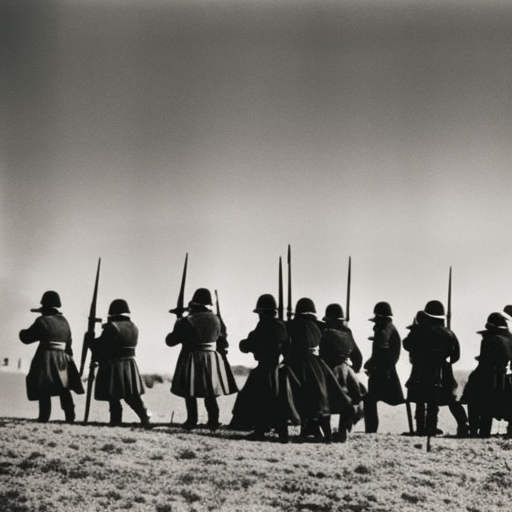Battle of the Grebbeberg: A Desperate Stand in the Netherlands
The Battle of the Grebbeberg was a significant military engagement that took place during the early stages of World War II in the Netherlands. It occurred from May 11 to May 13, 1940, when German forces launched an assault on the Grebbeberg, a strategic position near the town of Rhenen.
Background:
In 1940, the Netherlands found itself caught in the crosshairs of the expanding German war machine. The Dutch military, though well-trained and equipped, was ill-prepared to face the might of the German army. The Grebbeberg, a hill overlooking the Rhine River, was considered a vital defensive position. The Dutch army had fortified the area with trenches, bunkers, and barbed wire.
The German Assault:
On May 10, 1940, German forces invaded the Netherlands. The Grebbeberg was defended by the Dutch 8th Infantry Division, consisting mainly of conscripts and reservists. The German 207th Infantry Division, supported by artillery and air support, launched a full-scale assault on the Grebbeberg on May 11.
The Dutch Defense:
The Dutch defenders put up a fierce resistance, despite being outnumbered and outgunned. They fought from well-prepared defensive positions, using machine guns, mortars, and artillery to hold off the German advance. The German forces faced heavy casualties as they attempted to breach the Dutch defenses.
German Breakthrough:
Despite the Dutch resistance, the German forces managed to make a breakthrough on May 12. They used heavy artillery and air support to pound the Dutch positions, causing significant damage and casualties. The Dutch defenders were forced to retreat from their forward positions and fall back to secondary defensive lines.
The Final Stand:
On May 13, the Germans launched a final assault on the remaining Dutch positions. The Dutch defenders, now low on ammunition and supplies, fought bravely but were ultimately overwhelmed. The German forces captured the Grebbeberg, marking a significant victory for the advancing German army.
Aftermath:
The Battle of the Grebbeberg resulted in heavy casualties on both sides. The Dutch defenders suffered over 400 killed and 1,200 wounded, while the Germans lost around 400 men. The battle demonstrated the effectiveness of German combined arms tactics and the vulnerability of the Dutch defenses.
The fall of the Grebbeberg had a demoralizing effect on the Dutch population and military. It became a symbol of the Dutch resistance against the German invasion. The battle also highlighted the need for better coordination and communication within the Dutch military.
Legacy:
The Battle of the Grebbeberg remains an important event in Dutch history. It serves as a reminder of the sacrifices made by the Dutch soldiers during World War II. Today, the Grebbeberg is a national monument and a site of remembrance for those who lost their lives in the battle.
In conclusion, the Battle of the Grebbeberg was a desperate stand by the Dutch defenders against the advancing German forces during the early stages of World War II. Despite their bravery and determination, the Dutch defenders were ultimately overwhelmed by the superior firepower and tactics of the German army. The battle had a significant impact on the morale of the Dutch population and highlighted the need for improvements in the Dutch military. The Grebbeberg continues to be a symbol of Dutch resistance and a place of remembrance for those who fought and died in the battle.












